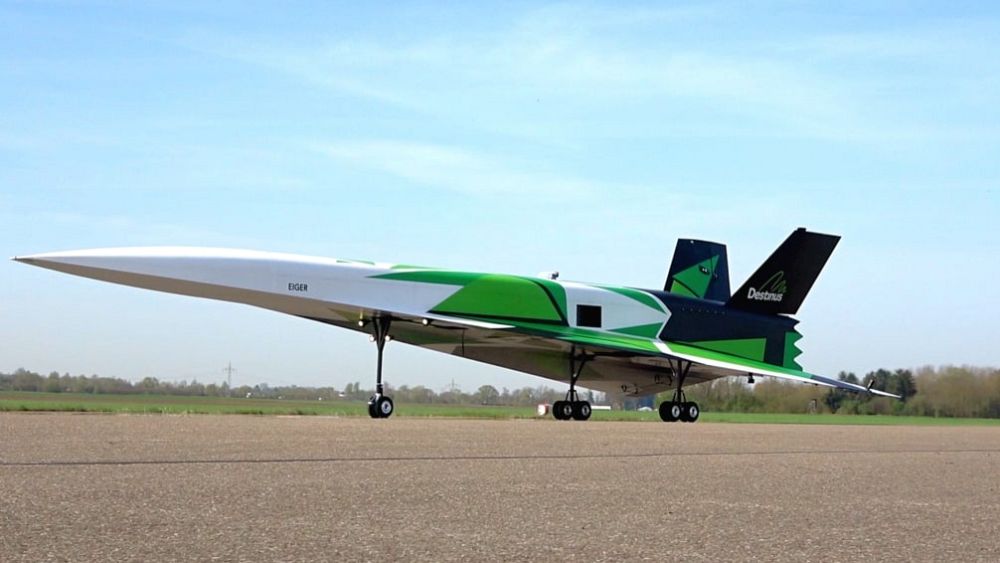A hydrogen-powered jet could usher in a new era of hypersonic flight, cutting around-the-world flying times to hours.
The Concorde, a supersonic aircraft of Anglo-French engineering, was the last aircraft to achieve this feat.
At its peak, it crossed the Atlantic Ocean in a record 3.5 hours, flying at a speed of 2,100 km/h.
A flight from Europe to Australia currently takes about 20 hours on a normal passenger plane. Swiss start-up Destiny wants to cut this flight time by more than four hours with a hydrogen-powered hypersonic passenger plane.
Destiny has already tested its flight prototype in recent years and announced successful test flights of the second prototype “Eiger” at the end of 2022.
“The prototypes look different than the final product because the final product has more advanced propulsion technology,” said Bart van Hove, head of advanced studies at Destinus at this year’s Paris Air Show at Le Bourget.
“It has a variety of engines, turbojets and ramjets, all powered by hydrogen and hydrogen-cooled. This goes hand-in-hand with a specific vehicle configuration as seen in our view: an airplane with a large intake of air. A central channel divided into various engine channels.”
“That’s not the case with the prototype. It’s a classic configuration because we’re going step by step.”
Spanish Government Investments
In April, the company received an investment boost when it announced it was participating in a Spanish Ministry of Science project that is part of the Spanish government’s plans to develop hydrogen-powered supersonic aircraft.
The responsible authority, “Centro para el Desarrollo Tecnológico e Industrial”, has selected the project from Switzerland as a strategic initiative for its “Plan de Tecnologías Aeronáuticas” (PTA). The total investment is 12 million euros, which includes companies, technology centers and Spanish universities.
He’s excited about the grants, says David Bonetti, vice president of business development and products. “Because they are a clear indication that Destiny fits the strategic objectives of Spain and Europe to promote hydrogen aviation,” Bonetti said.
“For deep-tech companies like ours, access to this EU funding is essential to conduct cutting-edge research and accelerate the innovation we need to compete globally. It will enable hydrogen-based solutions to move aviation one step further into reality.”
“We are trying to achieve the ultimate goal: to fly people safely with hypersonics, with hydrogen, without emissions. That means to go around the world in four hours. That is impossible with supersonics,” says Bart van Hove.
However, heat generation design is challenging.
Researchers at RMIT University in Melbourne recently developed 3D-printed catalysts that could power a hypersonic aircraft and act as coolant against the extreme heat generated when the aircraft flies at five times the speed of sound, at 6,100 kilometers per hour (km/h). .
At this speed, future commercial airlines will cover the route between Paris and New York in about 90 minutes.
4 hours 15 minutes from Frankfurt to Sydney
Hydrogen as an energy source is the subject of much research and development work. Proponents point to its environmental friendliness as the combustion of hydrogen produces mainly heat and water.
The amount of heat generated presents a design challenge.
Researchers at RMIT University in Melbourne recently developed 3D-printed catalysts designed to power a hypersonic aircraft, while also acting as coolant against the extreme heat generated as the aircraft flies at 6,100 kilometers per hour, five times the speed of sound.
At this speed, future commercial airlines will cover the route between London and New York in about 90 minutes.
The Swiss start-up company claims that with its technology, a flight from Frankfurt to Sydney takes just 4 hours 15 minutes instead of 20 hours, and a flight from Frankfurt to Shanghai takes 2 hours 45 minutes, eight hours less. than the current flight time.
From June 2022, Destiny is working with Spanish engine manufacturer ITP Aero to develop a hydrogen engine test facility. A grant from the Spanish government will fund the construction of a test facility near Madrid, where the hydrogen engines will be put through their paces.
Spain wants to play a pioneering role in the development and production of hydrogen-based propulsion in the future.

“Friend of animals everywhere. Web guru. Organizer. Food geek. Amateur tv fanatic. Coffee trailblazer. Alcohol junkie.”







More Stories
It appears that the British Ministry of Defense has been cyber-attacked
Australia sees a lower peak debt-to-GDP ratio, heralding a decline in projected total debt
Ticker of the weekend: local wins in Australia and France, European Duathlon Championships and world champion in Italy.